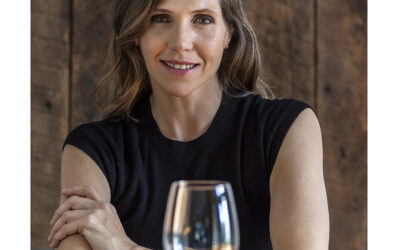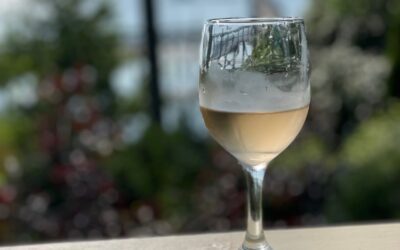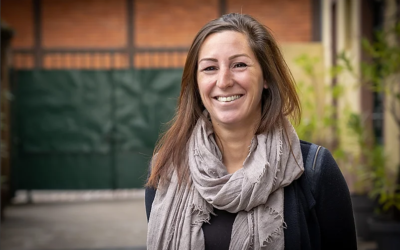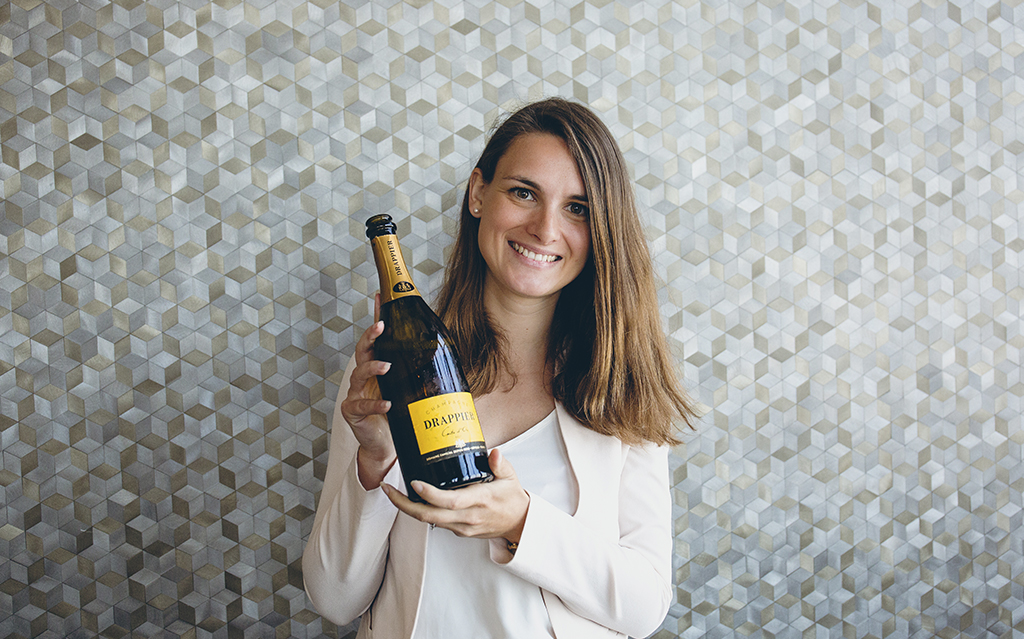
While the Côte des Bar, the Aube’s winegrowing region, is home to nearly 8,000 hectares of vineyards and accounts for approximately 25% of total champagne production, for many years, this southernmost outpost of the Champagne appellation was brushed aside. Excluded from the Champagne appellation until 1927, the Aube was even at some point reduced to the ranks of “Champagne deuxième zone” (second-class status), a short-sighted decision that unfairly brought the region into disrepute further widening the chasm between
North and South. But if the Aube once suffered from lesser recognized reputation today it has finally been plucked from obscurity and no longer exists as a marginalized terroir.
Enjoying a 21 st century resurgence, the Aube owes much of its newfound fame to one little gem sheltered in the commune of Urville. Now a staple of the region, Champagne Drappier is undoubtedly one of the Champagne Houses that has put the Côte des Bar on the map in the world of wine. A family enterprise since 1808, Champagne Drappier is the pioneering Côte des Bar codebreaker, challenging the region’s deeply entrenched rules by ways of disruptive innovation
and risk taking. Shrugging the chains of tradition, the Drappier family has, through eight generations, managed to extract with military precision the most authentic expression of their terroirs to deliver world-class cuvées. Knowing how to adapt their winemaking technique and philosophy to suit the land, Drappier is a family who understands the value of taking a risk.
This is why the magic of Drappier is resting underground in its legendary wine cellars constructed by Cistercian monks from Clairvaux Abbey dating back to 1152. These cellars are among the oldest in Champagne, and shelter a number of highly coveted cuvées that highlight Drappier’s authentic connection to the art of winemaking and the region’s love affair with Pinot Noir. In fact, much of region’s history cannot be dissociated from that of Drappier’s. In the early 1930s, the 6 th generation vintner, Georges Collot, strongly advocated for the
replanting of Pinot Noir. And more than just earning the nickname “le Père Pinot” (‘Old Man Pinot), Collot’s rebellious determination is the reason why Pinot Noir not only occupies today 70% of the Drappier vineyard, but also represents the percentage cultivated in the region.
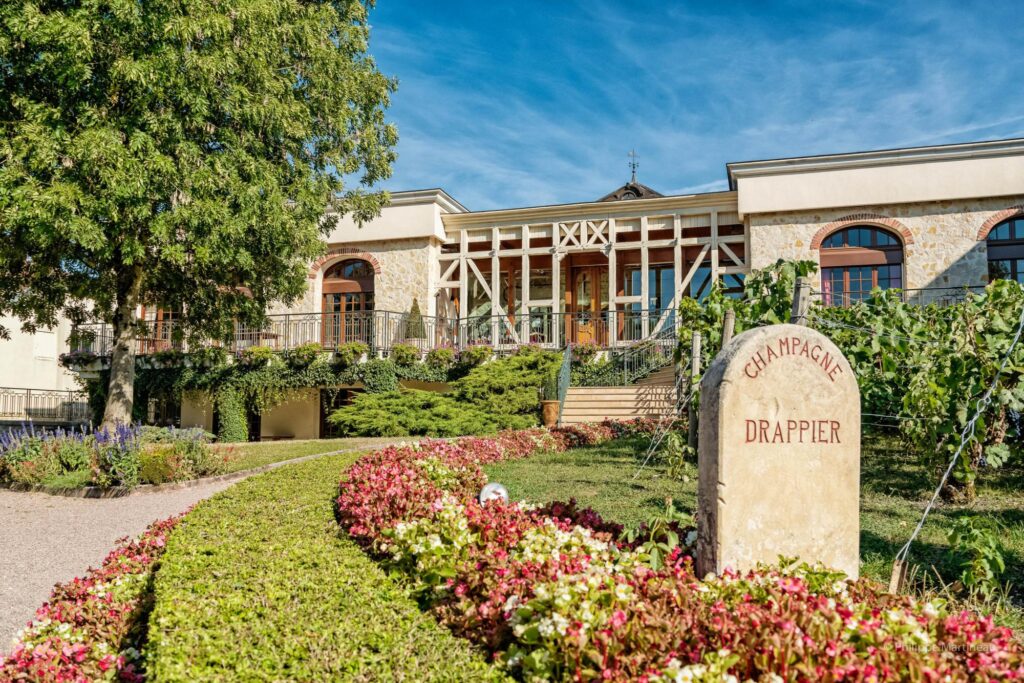
A family-owned champagne house charging ahead and taking the lead, Drappier’s has certainly been blessed with many more fortunate groundbreaking moments. The house became the world’s first carbon-neutral Champagne house in 2015 and was awarded the “Innovation Prize” at the 2019 Grand Prix ceremony of La Revue du vin de France. It also broke grounds with a few unconventional cuvées like the Quattuor, a unique blanc de blancs which includes the abandoned and forgotten grapes of Champagne, and Clarevallis made with grapes from the Urville hillsides, organically farmed, planted during the Cistercian period in the 12th century.
Drappier is also one of the first houses to successfully experiment with zero dosage and unsulfured cuvées and is the first to grow the eight authorized grape varieties part of the Champagne appellation – including the recently added Voltis (a hybrid variety). Drappier is also one of the uniquely rare Maison to practice “immersion” ageing process, whereby bottles are immersed in the depths of the sea for one to three years. All bold approaches that have transformed the way Champagne is now viewed.
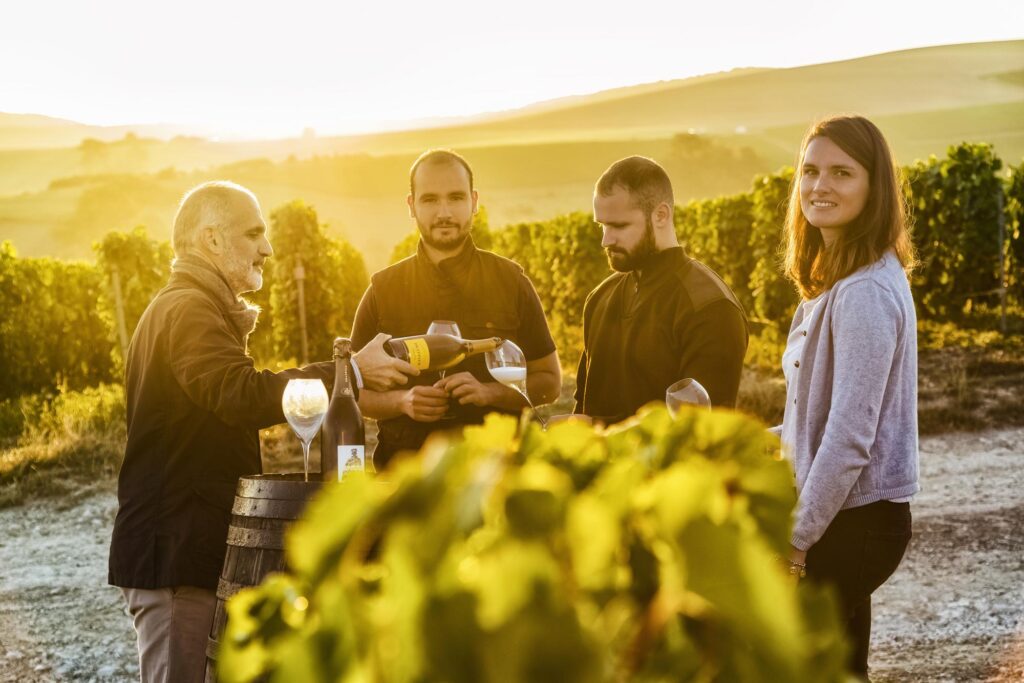
The 8th generation of the Drappier family are now perpetuating the family legacy utilizing the skills developed by the generations before them whilst carrying forth the avant-garde élan that is the very essence of Drappier’s heart and soul. I had the immense privilege of chatting with Charline Drappier via zoom. Charline and I had been trying to connect since December of last year. Needless to say, I am glad I continued to pursue her. This is by far one of the most inspiring and motivating interviews I have had the chance to conduct with a Champagne personality.
Charline spoke about her life as the head of sales, marketing, and communications of one of the most legendary Champagne houses in the heart of the Côte des Bar, her unconventional journey as a woman in a predominantly male dominated world, and the “pay it forward” work she is doing with her female colleagues at “La Transmission Femmes en Champagne”. Most importantly, she talked about what it is like to continue the extraordinary family adventure alongside her grandfather André, her father Michel, and brothers Hugo and Antoine, and how they all preserve the family’s most precious legacy: the “thinking out of the box” mentality.
Your family name takes its roots in the Middle Age, a time when Champagne was known for its fairs with merchants principally trading textile, silk, and cloth. Can you briefly retrace the origin of the name Drappier?
We’re a family of winegrowers spanning over 8 generations. But before we became winegrowers, and to show how deeply rooted in Champagne are name genuinely is, we were cloth manufacturer. “Drapier” is the French word for cloth merchant / clothier. We then officially became winegrowers in 1808.
Champagne Drappier has some of the oldest cellars in Champagne. How far back do they date?
Well, if we consider chalk pits as cellars then they are the oldest ones in Champagne as they were built by the Romans in the 4 th and 5 th Century. But our cellars were constructed by Cistercian monks from Clairvaux Abbey and are indeed among the oldest in Champagne, dating back to 1152. The Cistercian monks not only built cellars, but they also planted vines on hillsides in the Aube.
Champagne Drappier was founded in 1808. You are the 8 th generation at the helm of the house. How would define the Drappier legacy?
We’re a family-owned champagne house and throughout the generations, we have always kept our adventurous and pioneering spirit. We draw on old winemaking traditions but also always look to innovate. My grandparents were among the first champagne producers in the Aube. For a long time, the winemaking tradition in the Aube was lost as most growers were selling their grapes to producers in the Marne. After the war my grandparents made the decision to challenge the status quo and start producing their own champagne to highlight the terroir. It was a very bold, daring, and innovative decision at the time. My father inherited this adventurous spirit and constant
drive to do things differently. I think that is what defines the Drappier legacy – the blending of old traditions that define our family name and history with the desire to not dwell in the past and continuously look toward the future and to progress.
Speaking about the Aube, it was overlooked for decades and sort of suffered a
litigious relationship with the rest of Champagne until finally being officially
included in the Champagne Appellation in 1927. How do you think the region has evolved?
I think the trends have changed. The Marne used to be the ultimate hub for champagne producers. Today the Aube has become the new El Dorado where new ideas are created, where new producers settle and thrive. For my generation, it is a great source of pride to come from that region. The Aube has fully integrated itself into the diversity of e Champagne region. The movement my grandparents started in the 1950s has
successfully grown. Today the wines from Aube have gained tremendous reputation thanks to a new generation of champagne producers who are establishing themselves with different styles and different personalities.
Your grandmother’s father is of historical significance in the Aube enjoying the
nickname “Père Pinot” (father Pinot). Can you tell us more about him?
Yes, my great-grandfather came back from World War I injured. He was not able to work too long in the vines, but he fought arduously for the replanting of Pinot Noir in the region. Pinot Noir was the historical grape variety which the monks called “Morillon Noir”. After phylloxera winegrowers were not necessarily focused on Pinot Noir because it is a grape variety that is very fragile. But that didn’t stop my great grandfather who lobbied to have it reinstated. This endeavor was further pursued by my grandfather who worked to have new rules instated where new winegrowers were asked to plant Pinot in lieu au Gamay. Now Pinot Noir represents approximately 65% of the Côte des Bar.
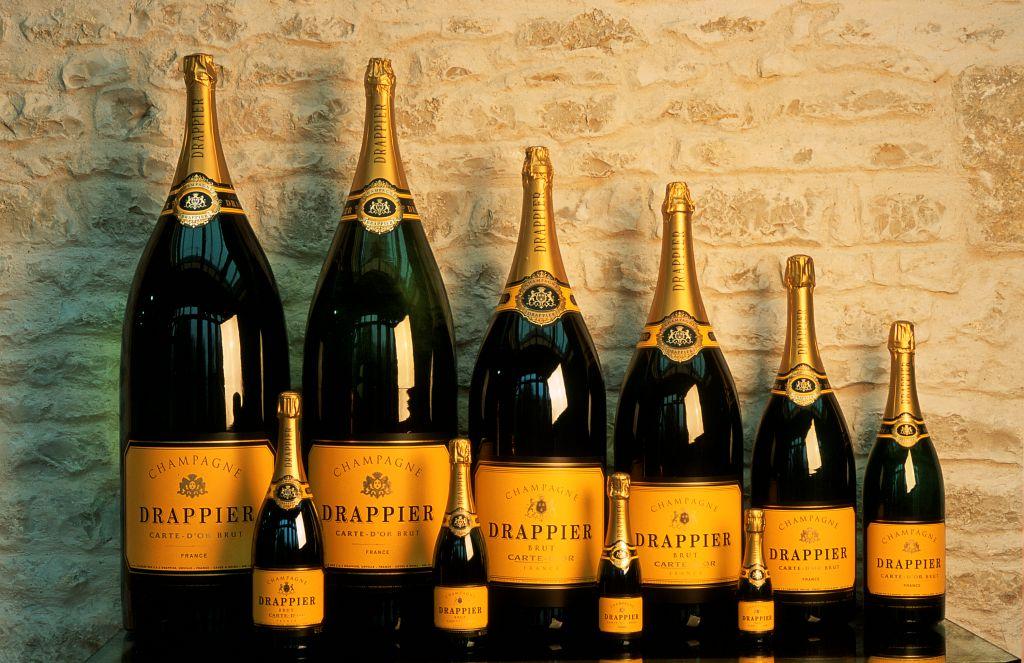
Drappier is one of the pioneers of the zero dosage.
What was the impetus behind this stylistic choice?
Our terroir is predominantly planted to Pinot Noir – a very rich and expressive grape variety. Also, we’re located in the South of Champagne and even if our grapes do not lack in acidity, this location produces very opulent Pinot Noir. So, when my father started to elaborate his Blancs de Noir (100% Pinot Noir) he quickly realized that adding dosage was making the wine heavier when it fact it naturally already had all the excellent flavor qualities to stand alone. That gave birth to our first Zero Dosage – a champagne that offers very fruity flavors but also has a palpable mineral aspect to it that comes from the Kimmeridgian limestone of the Jurassic period.
Staying on the subject of Pinot Noir, you’re also one of the few rare champagne
houses to make a Rosé de Saignée.
This is a story that started with my grandmother who in the 1960s was determined to craft a rosé which quickly imposed itself as a 100% based Pinot Noir. Being so close to Les Riceys, known for producing rosé from the process of maceration, we naturally dismissed the idea of crafting a rosé d’assemblage (blending). We wanted to have all the aromatic benefits derived from the skin contact. We really seek to extract the intensity and exuberance of the Pinot Noir. We never waver from this philosophy even with our Vintage Rosé “La Grande Sendrée Rosé” which is composed of 80% saignée topped with 20% chardonnay to gain in finesse during the aging/maturation process.
You speak with great affection and immense respect about your grandparents,
father, etc- What is it like to have this very fusional relationship with your family?
I am blessed and very lucky to be working with three generations: my grandfather who is 97 years old and stops by the office every day to see us; my father and my brothers.
There’s an authentic and very organic generational handover. My brothers and I are, all three of us, involved in different sectors of the business. I handle the marketing and communications side of things; my brother Hugo oversees the vineyards and the vinification process. He is the technician of the house and conducts all the experimentations; and lastly, Antoine is responsible for the horses on the estate. Half of our vineyards is in organic farming and 7 hectares are plowed and tended with the help of horses. He’s quite the adventurer!
I love working with my family. We perhaps function in a cliquish way, but we are very fusional together which allows us to keep our family identity while also preserving our free spirit. We also share a common passion and identical vision when it comes to the business and the direction of the Champagne house. Above all, we have the mutual desire to remain independent – that is our raison d’être which dictates all our daily decisions. There’s nothing like having the freedom to do what you want to do without the interference of outside forces. That gives us a big advantage when it comes to maintaining our integrity and authenticity.
Concretely speaking how does your independence translate into freedom?
When you don’t have to answer to shareholders or go through corporate politics and hierarchy it gives you the liberty to follow your instinct and act on an impulse. For instance, my brothers and I would not have been able to craft the Clarevallis cuvée, which was one of the first cuvées to be certified organic. Our modus Operandi is evidently almost exclusively a spur of the moment type of thing which allows for greater creativity and innovation.
How has the house adapted to climate change?
Our champagne house became the region’s first carbon-neutral estate in 2016.
From vine to wine, every effort is taken to reduce our carbon footprint. We handle over 110 hectares of vineyard, of which 60 are privately owned, 17 have been certified organic, and an additional 10 are currently in transition towards this certification. The whole vineyard is cultivated using sustainable viticulture practices. We don’t use any herbicides or pesticides. We are laser-focused on respecting the life in the soil and therefore adhere to gentle farming practices that includes manual weeding (using a hoe), partial grass coverage, horse-drawn ploughing, and fallow land. As I mentioned, my brother Antoine works with horses in the vineyards. This precise farming technique means less soil compaction and consequently less erosion. Another thing we have done is to be able produce 75% of our energy via solar panels.
It’s a lot of little minor adjustments we continuously make to ensure that we are taking the necessary measures to respect and preserve the environment, and make sure we are not contributing to climatic upheavals.
You’re one of the rare Champagne House that utilizes all the authorized grape varieties used to make champagne.
Yes, we grow all seven grape varieties part of the Champagne appellation. It is important for us to help to preserve minority grape varieties, such as Fromenteau, Arbane, Petit Meslier and Blanc Vrai. This is how we can craft our Blanc de quatre Blancs called Quattuor. It is crafted from an assemblage of white grape varieties: 25% Chardonnay, 25% Petit Meslier, 25% Blanc Vrai and 25% Arbanne. When we first crafted this cuvée people thought we were crazy. But again, it is that freedom of decision that allowed us to be bold and daring and to let ourselves be inspired by our élan.
Historically there have been 7 grape varieties authorized in Champagne. Just recently an 8th one was added and once again, ahead of the game, Drappier is setting the trend. Can you tell us more about this pioneering move?
Our champagne house is the first producer in Champagne to grow all eight grape varieties legally authorized under the appellation. The new one is called Voltis is the region’s first authorized hybrid variety. That was actually my brother’s initiative. It was born out of the desire to preserve an important historic genetic heritage that was about to disappear because people didn’t see the value anymore. We are wholeheartedly committed to keep this diversity within our vineyards. Voltis for now is only authorized as an experimental grape with plantings restricted to approximately 5%. Also, if used in a champagne d’assemblage, Voltis cannot exceed 10% of the blend. Voltis is a word used to describe fungus-resistant grapes and was thus originally created to combat diseases. It is resistant to downy and mildew and because of that will most likely help vignerons reduce the use of insecticides, herbicides, and fungicides. That’s why we were eager to subscribe to these tests.
How do you see women’s role evolving in Champagne?
Women have made important strides in Champagne notably within technical fields. We see more and more women becoming chef de caves (cellar masters), which was not always an attainable position before. But of course, there is still a numerical over-representation of men within the world of wine even if things are changing.
You’re part of the group “La Transmission Femmes en Champagne”. Can you tell us more about it?
It is a group that was founded by Maggie Henriquez at LVMH.
Maggie comes from a generation when it was more difficult for women to impose themselves in the business world. Even if, she herself never faced obstacles in her career for being a woman, she wanted to carry on the message of solidarity and support. I was the most recent addition to the group which testifies to the trans-generational aspect of La Transmission. We have a lot to learn from our (female) elders. I have gained tremendous insights and self- confidence as I find myself being the only woman within our champagne house.
La transmission is an association that aims to inspire women of all ages and all walks of life. It offers a window of Champagne through the spectrum of women.
What is your most memorable champagne moment?
My most memorable moment has to be the day my daughter was born. My grandfather (who was then 93), my parents and my brothers came to see me at the maternity ward, and we honored the tradition of giving her a tiny drop of brut nature rosé champagne. And it was also my first glass of champagne in a while. We baptized my daughter Gabrielle with champagne, which really means we dip a finger in a glass of champagne and gently rub it on her lips. That champagne bottle had a strikingly special flavor.
You mention your daughter. Do you think she will one day take over the reins of the business one day?
My daughter is almost five years old, so there is no pressure. But she is at ease within that environment. She picks up bottles and glasses and then tells me that she’s going to meet with “her clients”. And yes “champagne” is one of the first words she learned to say. But again, there is no pressure for me to pass on the torch. I personally never felt any pressure from my parents, I was just naturally drawn to it. It is a fascinating field and once you’re in it, it is difficult to find another job or career that brings you such passion.

